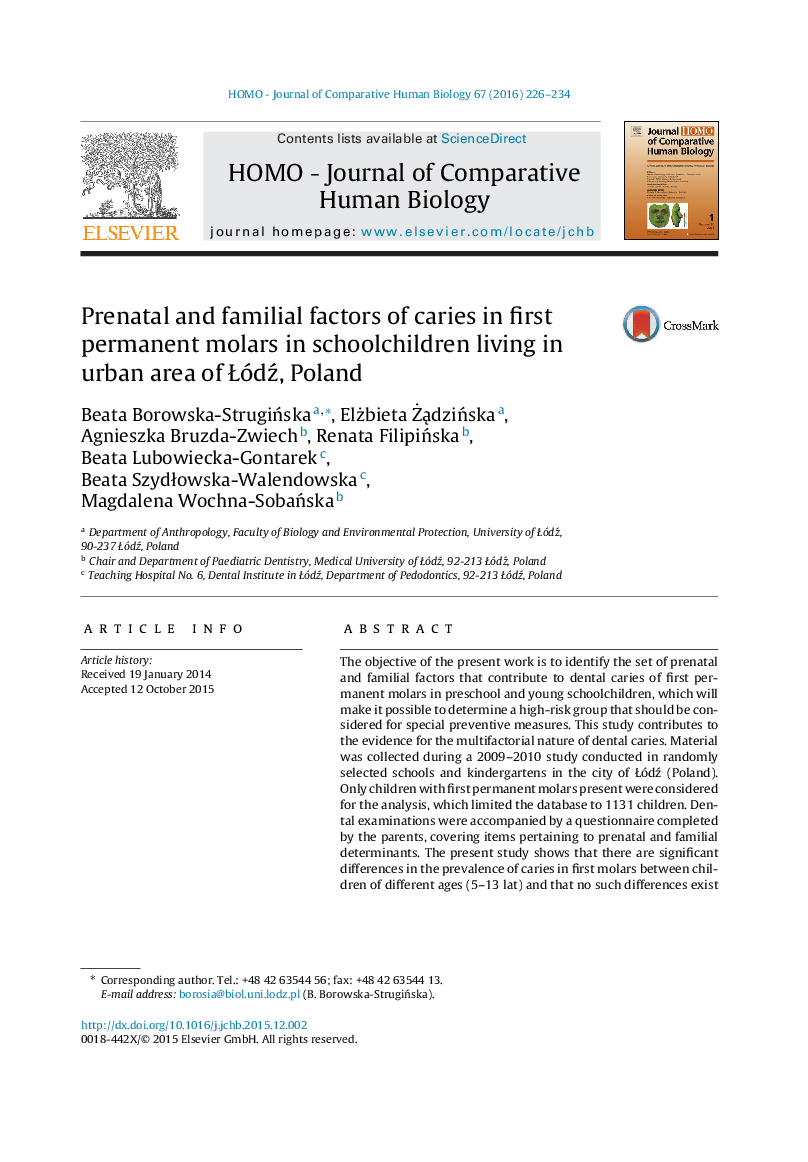| Article ID | Journal | Published Year | Pages | File Type |
|---|---|---|---|---|
| 100025 | HOMO - Journal of Comparative Human Biology | 2016 | 9 Pages |
The objective of the present work is to identify the set of prenatal and familial factors that contribute to dental caries of first permanent molars in preschool and young schoolchildren, which will make it possible to determine a high-risk group that should be considered for special preventive measures. This study contributes to the evidence for the multifactorial nature of dental caries. Material was collected during a 2009–2010 study conducted in randomly selected schools and kindergartens in the city of Łódź (Poland). Only children with first permanent molars present were considered for the analysis, which limited the database to 1131 children. Dental examinations were accompanied by a questionnaire completed by the parents, covering items pertaining to prenatal and familial determinants. The present study shows that there are significant differences in the prevalence of caries in first molars between children of different ages (5–13 lat) and that no such differences exist between boys and girls. The prenatal and familial factors conducive to caries include maternal education level (OR = 0.55), mode of delivery (OR = 0.63) and birth order (OR = 0.63). Mothers’ smoking habit is also associated with increased caries prevalence in children. Caries prevention should already begin during the prenatal period primarily in respect of mothers with lower educational attainment who are pregnant with a second or subsequent child.
